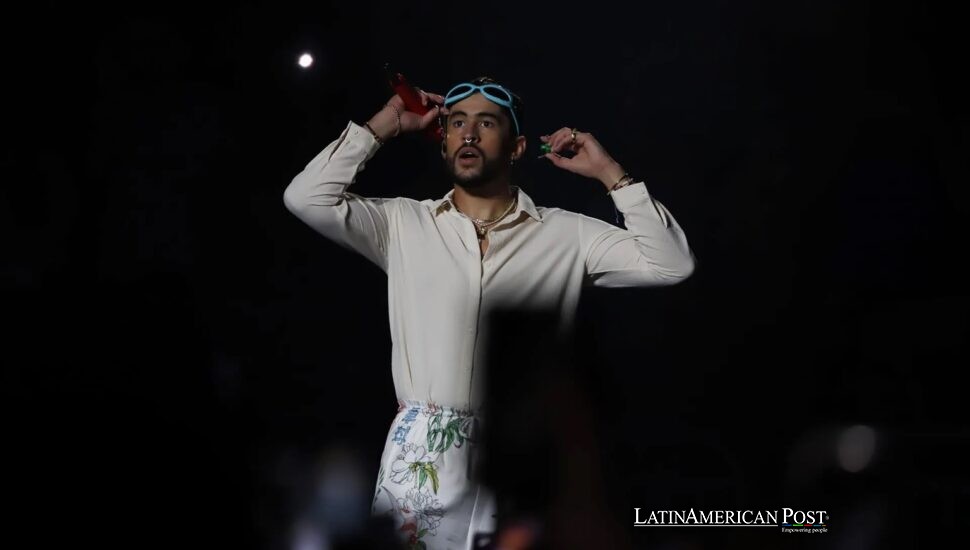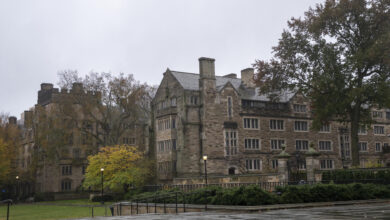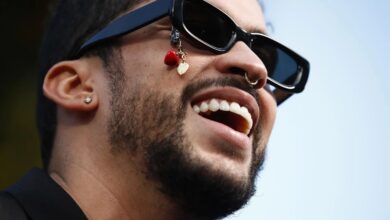Puerto Rican Bad Bunny Spurs Global Social Change

Through his bold rejection of colonial history and societal expectations, Puerto Rican performer Bad Bunny became a voice for change that speaks to people across borders. His songs tell stories of local hardships in San Juan, yet these messages find listeners in cities from Mexico to Spain. The impact of his words proves that neighborhood problems turn into shared battles for fairness among different nations.
A Cultural Enigma and Worldwide Phenomenon
When Benito Antonio Martínez Ocasio, better known as Bad Bunny, first uploaded DIY tracks to SoundCloud, few would have predicted the global impact he would later command. Seemingly overnight, his stage persona, flamboyant fashion sense, and genre-bending reggaetón style seized the music charts and broke cultural barriers. By positioning Puerto Rico’s socio-political dilemmas front and center, the artist has become an emblem of “glocal” activism—where local specificity intersects with broad, universal experiences.
In dissecting his significance, 29 specialists from diverse academic fields collaborated on a new book: Bad Bunny Enigma: Culture, Resistance, and Uncertainty. Their research probes how the musician’s work transcends pure entertainment to champion social causes. Though these experts hail from musicology, sociology, linguistics, and political science, they converge on one key insight: Bad Bunny invests his artistry with commentary on colonial remnants, economic inequality, and cultural erasure that resonate beyond Puerto Rico’s borders.
These issues might seem intangible to outside observers, but they loom large in daily life for Puerto Ricans. Bad Bunny’s statements against selling public assets and the displacement of residents through tourism serve as motivation for people at society’s edges in numerous places. Through his music, the 30-year-old artist links entertainment with societal transformation, prompting his audience to examine the underlying factors that shape their environment.
As researchers note, his influence comes from a combination of neighborhood bonds and international appeal. Such a balance demonstrates how he keeps his hometown connections intact yet speaks to listeners across borders. In Bad Bunny’s discography, references to historical oppression—both of Afro-Puerto Ricans and of the island under external governance—travel fluidly, capturing listeners’ attention in faraway places who relate to parallel struggles in their own countries.
Colonial Legacies and the Burden of History
Puerto Rico’s status as a U.S. territory—officially branded a “commonwealth” or “Estado Libre Asociado”—informs much of Bad Bunny’s worldview. Although the island has an elected governor and legislature, ultimate authority over key areas such as defense, trade, and international relations rests in Washington, D.C. Critics argue that this arrangement perpetuates a colonial dynamic, leaving everyday Puerto Ricans subject to external decisions they have little power to influence.
Historically, Puerto Rico was a Spanish colony. After the Spanish-American War of 1898, the United States supplanted Spain. More than a century later, the island remains trapped in an uneasy limbo of partial autonomy. Many Puerto Ricans, including Bad Bunny, decry the associated constraints. Songs like “El Apagón” highlight breakdowns in public services—mainly rolling blackouts—and the frustration that such crises generate. Meanwhile, lyrics lament how external investors exploit local resources, a pattern reminiscent of earlier colonial ventures.
Sheilla R. Madera, a professor of Global and Sociocultural Studies, argues that these references reflect “coloniality,” or the continued oppression shaped by centuries of imperialism. She sees parallels in Latin America, where gentrification, privatization, and neoliberal reforms displace vulnerable populations. According to Madera, Bad Bunny’s creative approach to local problems resonates with younger generations across the region who recognize these shared “denominators of struggle.”
The impetus behind framing his music with socio-political commentary may surprise some fans who only expect hits fit for dance floors. Yet this tension between partying and protest is nothing new. Puerto Rico’s cultural tapestry has long interwoven political critiques within rhythmic structures—from salsa to plena to reggaetón. Where older musicians might have endured censorship or overshadowed messages, Bad Bunny thrives in an era of social media amplification, ensuring that tracks like “Lo que le pasó a Hawaii” or “Debí tirar más fotos” strike chords in diverse corners of the world.
For instance, “Debí tirar más fotos,” from his latest album, plays as a nostalgic homage to fleeting images of home before they vanish. This motif resonates in conflict zones far from the Caribbean. Madera points out that both Palestinian and Lebanese listeners have adopted the song as a reflection of how war or territorial disputes alter their homelands. The same diaspora of meaning surfaced in the 2019 protests in Chile, where lines from “Calladita” were spotted on placards.
Defending Communities Through Music and Identity
Throughout his career, Bad Bunny has engaged in a careful dance: he remains a product of Puerto Rican identity, with Afro-Latinx influences shaping everything from his beats to his aesthetic while simultaneously achieving a global stardom that redefines the boundaries of Latin pop. His approach to language is a case in point. His lyrics emerge entirely in Spanish, incorporating street expressions from Puerto Rico’s everyday speech. Such devotion to his native tongue represents an unspoken challenge to mainstream expectations.
However, when English dominates music sales across borders, the numbers he attracts prove audiences connect through authenticity instead of language. The new academic volume underscores how using Spanish can empower fans, telling them they need not assimilate or compromise cultural authenticity. Instead, the rest of the world is invited to connect with a Spanish-language narrative of heartbreak, celebration, defiance, and social commentary—often underscored by a rhythmic, urban Puerto Rican flair.
One chapter of the book explores how “Andrea,” a track spotlighting women’s experiences, subverts typical reggaetón tropes that objectify female bodies. For many years, mainstream reggaetón was criticized for its overt machismo. By contrast, “Andrea” centers on women’s autonomy, spotlighting empowerment and validating women’s frustrations with everyday sexism. That messaging resonates in Puerto Rico and with global feminist movements seeking more inclusive anthems in popular music.
Discussions of activism sometimes place the burden of heroism on artists. Observers might expect a star of Bad Bunny’s stature to champion every social cause and speak out on every injustice. Yet Madera cautions that it is unfair to “position him as a hero.” Indeed, while fans appreciate the candid stances he takes—such as condemning colonial politics or homophobia—at the end of the day, his foremost identity is that of a musician. The impetus to rectify centuries of structural inequality should not fall solely on one performer’s shoulders.
Still, references to “glocal” activism highlight how even small gestures—like wearing a T-shirt condemning local corruption or weaving an anti-colonial line into a viral track—can resonate far beyond the island. The interplay of performance, messaging, and cultural identity situates Bad Bunny within a tradition of public intellectuals, albeit via the lens of pop stardom. Through his persistent dialogue about groups who face discrimination and displacement next to social exclusion, he brings attention from countries across borders to problems that the public often ignores in its comfort.
Cautionary Notes and Future Directions
Bad Bunny’s leaps to mainstream success illustrate a tension between market-driven global popularity and grassroots activism. Some critics fear that commercial demands may subsume more profound socio-political messages once the novelty of a rebellious reggaetón star fades. Others note the complexities of stardom: the artist might compromise specific values to maintain industry relationships or to align with corporate sponsors.
For now, the best evidence suggests that he remains steadfast in emphasizing Puerto Rico’s plight, from the privatization of utilities to the exodus of younger generations who seek better opportunities. The track “El Apagón” references the fragile electrical grid—an urgent matter after repeated natural disasters that have devastated the island’s infrastructure. Meanwhile, “Lo que le pasó a Hawaii” addresses a phenomenon akin to gentrification, with tourism overshadowing local needs.
Such songs have found echoes in contexts as diverse as the Spanish Canary Islands and diaspora communities worldwide, which see parallels in how real estate booms displace native populations. The sincerity fueling these narratives invites solidarity beyond Latin America. Social media further amplifies these moments, turning them into viral clarion calls. “That is the power of music in the digital age,” one media scholar contends. “It can spark a conversation in places that share no immediate link to Puerto Rican struggles, yet connect on universal levels of injustice.”
At the same time, the conversation within Bad Bunny Enigma: Culture, Resistance and Uncertainty acknowledges that no single album or artist can singlehandedly eradicate centuries of systemic violence or dismiss the colonial legacy. Madera, for example, underscores that the “Estado Libre Asociado” is effectively “a euphemism” for continued subjugation. Beneath the veneer of autonomy, Washington’s power lingers, shaping the territory’s economy and governance.
This layered reality helps explain why so many of Bad Bunny’s songs evoke a wistful longing for a Puerto Rico that might have been—one unburdened by exploitation or mismanagement. Some fans interpret lyrics as revolutionary manifestos. Others see them as personal catharsis. In either case, the resulting synergy fosters a communal sense that even if the singer cannot rectify the entire system, his platform can highlight what remains broken.
One must also consider the possibility that activism fatigue can set in. Not every fan or listener identifies equally with calls to action, especially if they approach his music purely for escapism. But as global events continue—pandemics, economic crises, climate disasters—the impetus for art that merges politics with pop culture seems likely to grow. Observers question whether more young artists might adopt a similarly bold stance. In that scenario, Bad Bunny’s legacy could well be the forging of a new generation of socially conscious reggaetón.
Given the global dimension of injustice, fans in Chile, Lebanon, Palestine, or the Canary Islands can adapt his lyrics to reflect local struggles. Cultural translations occur not only in the literal sense—transforming Spanish into other tongues—but also by weaving the essence of his protest into separate contexts. That phenomenon testifies to the musician’s broad, if informal, coalition-building. When an activist in Chile waves a banner quoting “Calladita,” the lines become a universal slogan for all who face oppression.
Lastly, the question arises: Should the star maintain the political outspokenness that has become integral to his brand, or might he scale it back in pursuit of mainstream acceptance? In spite of pressure, he stays focused on moving forward between profit needs and real artistry. Puerto Rican flags and streets next to symbols often show up in his visual art pieces. Through press interviews, he speaks against the actions of corrupt leaders, which leads to responses from government representatives.
However the future unfolds, how Benito Antonio Martínez Ocasio bridges local identity and global stardom will remain a compelling blueprint for other Latinx artists. At age 30, he has assembled an influential discography that channels everyday frustrations—ranging from water shortages to paternalistic governance—into catchy anthems heard on top charts around the planet. Although “global star” might be an understatement, he never lets audiences forget his Puerto Rican core.
Also Read: Argentine Rapper Trueno on Hip-Hop’s Growth and Artistic Resilience
The alarming bunny phenomenon exemplifies how the experiences of a small island territory can spark activism across continents. His irreverent style, boundary-pushing lyrics, and unwavering use of Spanish have built cultural bridges for disenfranchised communities from Hawaii to the Canary Islands and beyond. Scholars and fans alike hail him for articulating struggles of colonialism, patriarchy, gentrification, and more while cautioning that no single celebrity can dismantle centuries-old structures alone. For the moment, at least, the synergy of music, politics, and identity offers hope that a new generation of artists may similarly amplify local injustices on a world stage—thus spurring global social change.




